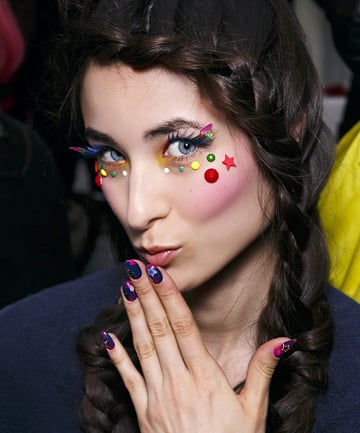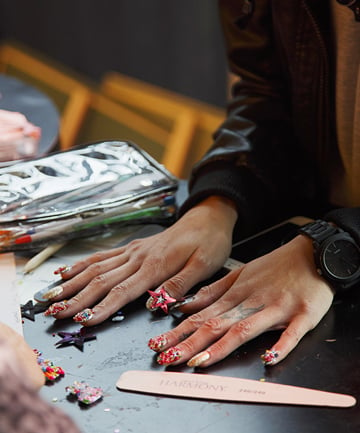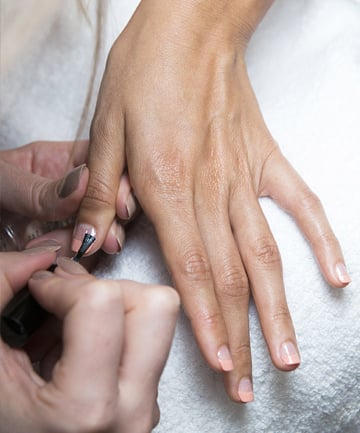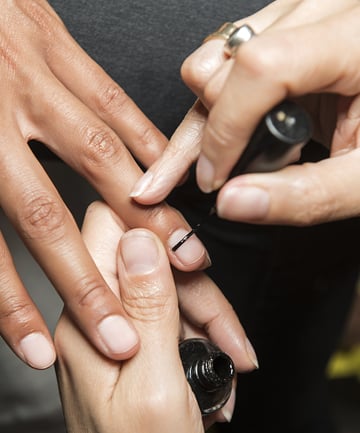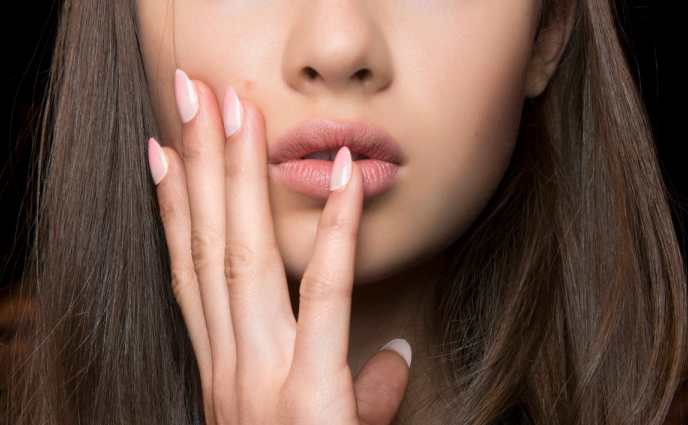Grooming your nails is an unskippable step if you want your nail art to look flawless. Just like any painter, you need the right canvas — buffing away unwanted texture and pushing back your cuticles will make your polish go on easier. (Bonus: It'll also help your nail polish stay on longer.)
Image via Imaxtree
OK, so you're probably tempted to paint your non-dominant hand first — it is, after all, easier. But hear us out: It's actually easier to start with your dominant hand.
Why? With your non-dominant hand polish-free, you'll be able to put your full focus on painting your nail art, without worrying about smearing any existing art. You'll also be able to use your polish-free hand to help clean up any mistakes, which are going to be much more common when you're painting with the aforementioned non-dominant hand.
One last tip: Before you move to your other hand, make sure that your dominant hand's nail art is 100 percent dry.
Image via Imaxtree
Painting your nails while you're sitting on the couch, watching your favorite TV series can be relaxing. However, we mean business here. If you want to make sure your nails perfect, consider painting them at a desk.
The flat and steady surface will decrease any shaking or wobbliness. It's better if you can lean both your elbow and palm on the flat surface for extra stability. Find the most comfortable and flexible position for your non-dominant hand when holding the brush and other tools.
Image via Imaxtree
You need a lot of patience when applying nail polish. Take your time and use slow movements when painting. Lightly press the nail brush a millimeter away from the cuticle (leave a gap!), apply a little pressure to press in the brush, and slowly glide one strip down the middle. Use thin coats and wait for the first layer to dry before applying a new one to avoid mess ups.
Image via Imaxtree
Because your dominant hand is a lot steadier, you can use its movement while painting the polish on it. For example, when painting the sides of your nails, let your non-dominant hand do the previous step. Then, while the brush is gliding, slowly tilt the finger you're painting so that the brush will be able to coat the sides. As the brush goes up to the tip, you can also slowly pull down your finger to help the brush glide across your nails. You can do this technique when painting stripes and lines.
Image via Imaxtree



